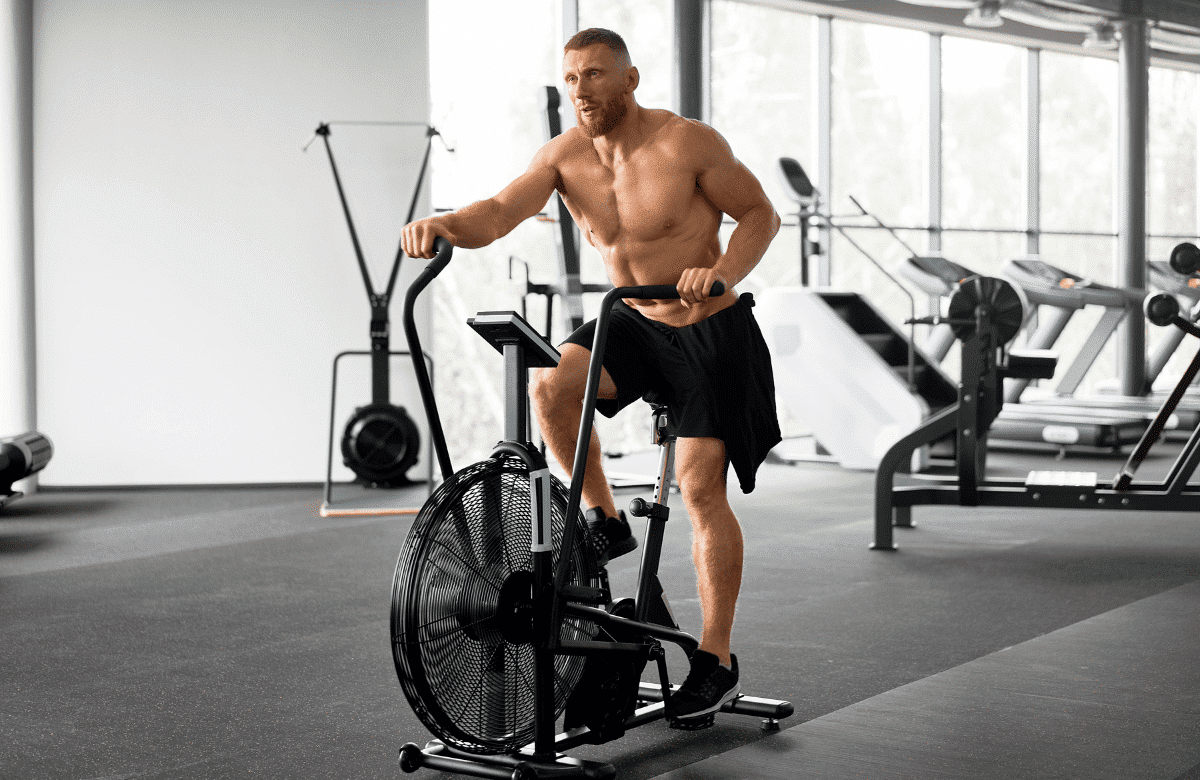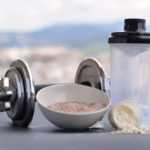Let’s face it – doing an adequate cardio workout can be an arduous task. It takes a lot of time, energy, and commitment to fully reap the benefits, and even then they’re not as visible or as tangible as they are with other forms of strength training. Luckily, with the right cardio machine, you can get a high-quality and effective workout in less time than it would take to do it on your own.
In fact, the sole purpose of many of the most sought-after machines is to make it easy and convenient for you to get that blood flowing and build some lean muscle mass in the process. As such, knowing which one’s the best cardio machine for your needs is the foundation of a solid workout routine.
Jump to:
- In A Hurry? Here’s Our Best Picks
- Why You Should Trust Us
- Who Is This Guide For
- How We Picked the Best Products
- How We Graded Each Product
- The Products
- Expert Tips for Buying the Perfect Cardio Machine for You
- The Remarkable Benefits of Exercising on a Cardio Machine
- Enhanced Cardiovascular Health
- Weight Management and Calorie Burn
- Convenient and Weather-Independent Workouts
- Customizable Intensity and Workouts
- Low-Impact Options
- Time Efficiency
- Monitoring and Tracking Progress
- Full-Body Engagement with Rowing Machines
- Mental Well-Being
- Social Interaction When Doing Cardio in a Gym
- Fueling Your Cardiovascular Performance: 10 Foods to Boost Your Endurance
- Frequently Asked Questions
In A Hurry? Here’s Our Best Picks

| 
| 
| 
| 
| 
|
|
| Product's name | Best Treadmill NordicTrack Commercial Series 1250, 1750, 2450: Expertly... | Best Rower Hydrow Wave Rowing Machine with 16" HD Touchscreen &... | Best Non-Motorized Treadmill TrueForm Trainer | Best Stationary Bike ASSAULTFITNESS Assault AirBike Classic, Black | Best Elliptical Trainer NordicTrack FS14i FreeStride Elliptical with 14” HD... | Best Stair Climber Rogue Fitness Jacobs Ladder |
| Final Thought | If you're a fitness enthusiast who wants to challenge yourself with a full-body workout, then the NordicTrack Commercial Series can give you a more comprehensive experience. | Hydrow Wave is great for people of all fitness levels, but it's especially well-suited for those who are looking to build strength and endurance without high-impact workouts. | Any piece of equipment can be used by anyone, but the TrueForm Trainer is especially well-suited for those who want a more realistic running experience. | This indoor bike is suitable for people of all fitness levels, but it's especially well-suited for those who want an intense workout that targets both their arms and legs. | If your cardio routine has been getting a bit stale, the NordicTrack FS14i is an excellent option to switch things up. | A vertical climber is undoubtedly a superb choice for anyone looking to step up their cardio exercises. |
| Machine Weight | 339.51 lbs | 102 lbs | 280 lbs | 110 lbs | 146 lbs | 325 lbs |
| L x W x H | 81.2'' x 39.2'' x 69.9'' | 80'' x 19'' x 43'' | 64'' x 31'' x 63'' | 59.95'' x 23.34'' x 50'' | 82'' x 22'' x 49'' | 76'' x 31.25'' x 65.5'' |
| Subscription | Not Required | $44 per month | Not Required | Not Required | Not Required | Not Required |
| Storage | Vertical Folding | Wall Mount | Non-Folding | Rollable | Upright Storage | Non-Folding |
| Learn more | See at Amazon | See at Amazon | See at Rogue | See at Amazon | See at Amazon | See at Rogue |
Why You Should Trust Us
Our long-standing and ever-growing commitment to testing out various pieces of fitness equipment has made the BoxLife team experts in this field. We have spent countless hours researching and analyzing the latest products on the market, with particular attention to their features, build quality and performance. We all have varying fitness levels and preferences, so we’ve taken into account a wide range of criteria when grading each product.
We understand how tricky it can be to find the best cardio machine for your needs, with many options that offer a plethora of different features. We tried to focus on the general user experience along with the potential outcomes since no one wants to invest in a piece of machinery that won’t provide any real value. Not to mention the additional safety measures that are taken into consideration when buying a machine for intensive cardio workouts.
Who Is This Guide For
If your fitness goals include getting your heart rate up and burning fat, then you can definitely benefit from this guide. We’ve put together a comprehensive list of the best machines on the market with detailed descriptions of their features and specs, so you can get all the facts before making any decisions. Whether you’re a beginner or an experienced user, our selection of products caters to everyone’s needs – from budget-friendly to more luxurious options.

How We Picked the Best Products
We brainstormed our main points after meticulously testing and researching each product, with each member of our team getting a chance to give their feedback. After all, we wanted to make sure the criteria were unbiased and didn’t favor any specific type of user. With that said, we also took a peek at discussion threads on Reddit and Quora, where people shared their personal experiences with various products.
Not only did this give us more perspectives on each item, but it also proved that different users have different needs when it comes to cardio machines – and that the best machine for one person might not be the best option for another. We took the same approach when we browsed consumer reviews on major retailers like Amazon, Titan, and Rogue Fitness, with a number of perspectives appearing across the board.
How We Graded Each Product
To achieve a full-body workout and train every muscle group, you need specific features that target those areas. What each individual needs, however, is a different matter. We put together the best machines on the market and graded them based on a specific set of criteria, including:
- Build Quality – When you’re performing a challenging workout, you want to make sure that the machine is sturdy and won’t break after a few uses. Oftentimes, this is reflected in the way a specific product is built and how it takes on the unique pressure of each user. The exact materials used in the construction will ultimately influence the durability of each product.
- Comfort – Working out is all about pushing your limits, but you need to be comfortable while doing so. We paid particular attention to the way each machine is designed and how it fits different shapes and sizes – such as adjustable cushioning, handles, armrests, and more. Each product should also offer enough space for you to stretch out without compromising your safety.
- Performance – The exact performance of a cardio machine will depend on its purpose and design, with many of them offering unique features that make it stand out from others. We looked at the specs to determine how fast each machine can go, what type of workout programs are included, additional features like a console or display monitor, and more.
- Value – In the end, it all comes down to whether or not you’re getting your money’s worth. In other words, we made sure to consider the overall value of each machine and how it fares against its competitors in terms of features, build quality, performance, and comfort. If the product you’re looking at is more expensive than its counterparts, we’ll let you know why it’s worth the extra money.
The Products
Once we had a general consensus on our grading system, we put together a comprehensive list of contenders for the best home cardio machine available. While they may have different modes of operation, each of them brings its own unique set of features and capabilities. But even so, some of them may be better suited for certain types of users than others.
NordicTrack Commercial Series – Best Treadmill
Starting off strong with a real powerhouse, the NordicTrack Commercial Series is a top-tier treadmill that’s packed with features. It boasts an impressive range of speeds and inclines as well as a quiet magnet motor, with a number of preloaded workout programs that you can use to keep your heart rate up. It doesn’t feel clunky either, thanks to its low-profile design and generous cushioning. Its superior build quality and overall performance result in consistent results and a smooth ride.
Pros
- Versatile and powerful 3.6 CHP motor
- Targets your entire body with various incline and speed options
- Generous 20”x60” running belt for comfortable movement
- Comes preloaded with 50 workout programs to choose from
Cons
- A high-impact and intense workout may not be suitable for everyone
- Noisy when running at higher speeds
Key Specs
| L x W x H | 81.2” x 39.2” x 69.9” |
| Machine Weight | 339.51 lbs |
| Subscription | Not Required |
| Storage | Vertical Folding |
Why It’s Great
No other machine can match the intensity of a treadmill, especially when it’s as versatile and powerful as the NordicTrack Commercial Series. It offers a solid build quality that can handle your toughest workouts, with plenty of speed and incline options to keep you on your toes.
Since many of us sit in front of a computer all day, this machine is a great way to break away from your regular routine and challenge yourself with something new. As your performance improves, you’ll find yourself reaching higher goals and unlocking new heights of fitness.
Perhaps the most notable feature is the 12-percent incline that it offers, which basically simulates the feeling of running uphill. You get full control over the intensity of your training, with higher inclines targeting more muscle groups and burning fat faster. On top of that, you can also track your performance with its built-in monitor and console, giving you a clear picture of your progress.
The graphics are crisp and the viewing angles are excellent, with detailed specs for each workout program, ranging from distance traveled to calories burned and current heart rate.
As far as speed is concerned, the NordicTrack Commercial Series can go up to 12 MPH with adjustable increments, giving you the ability to set your own pace. The machine also has a low-impact design and generous cushioning that makes it comfortable for everyone, with no need to worry about any joint pains or fatigue during your workouts.
The padding is strategically placed as well, helping to absorb shock while you run and protecting your joints from any long-term damage. Even the most challenging sessions feel smooth and manageable with this machine, with natural inclines and no jarring motions.
Who It’s Best For
If you’re a fitness enthusiast who wants to challenge yourself with a full-body workout, then the NordicTrack Commercial Series can give you a more comprehensive experience. With variable inclines and speeds, this machine can take your workout routine up a notch, allowing you to target specific muscle groups and burn calories faster. It’s also great for those who want a more consistent and steady workout since you’ll be able to track your progress with the built-in monitor.
Hydrow Wave Rowing Machine – Best Rower
There’s a long list of rowing machine benefits, and Hydrow Wave is here to take advantage of them. This machine has a unique design that allows for greater mobility and range of motion while exercising, giving users more control over their movements. It also features a low-impact mechanism that works with your body instead of against it, with a variety of digital resistance levels to mimic real-life rowing on the water. The varied levels of resistance do a fantastic job of targeting your entire body, with the added bonus of being able to access a wide range of workouts directly from the machine.
Pros
- A low-impact mechanism for a relaxed workout
- Smooth resistance levels to keep your muscles challenged
- Full range of motion during exercises for increased mobility
- Monitors heart rate and calories burned during training
Cons
- Doesn’t include custom workouts
- Requires more space to set up
Key Specs
| L x W x H | 80” x 19” x 43” |
| Machine Weight | 102 lbs |
| Subscription | $44 per month |
| Storage | Wall Mount |
Why It’s Great
There’s a lot to love about Hydrow Wave, and one of the biggest reasons is its low-impact mechanism. This makes it easier on your joints while still giving you a challenging workout that challenges your muscles and improves cardiovascular endurance. Its natural and smooth resistance levels also provide a more relaxing experience, allowing you to focus on your form without worrying about sudden jerks or movements. The smooth and easy resistance is also great for those just starting out, as it gradually increases in intensity as you go.
The machine has a full range of motion that makes it perfect for stretching and warming up before and after your workouts. The adjustable handles let you customize the length of each stroke according to your body type and size, while the digital display monitor tracks your heart rate and calories burned during training. This gives you valuable insight into your interval training and can help you adjust your workout routine if necessary. Information like your current speed and wattage is also clearly displayed, which helps you stay focused and motivated throughout your exercise.
Perhaps the best part about Hydrow Wave is how easy it is to use and maintain. Its components are designed for durability and stability, with no need to adjust or calibrate the machine every few months. You can also fold it up and store it away when not in use, which is great if you’re trying to save space. Plus, a full library of over 4.000 trainer-led workouts is included, ensuring that you can find a routine to suit your needs. If you need something less intense, you can opt for the rowing machine’s low-impact mode as well.
Who It’s Best For
Hydrow Wave is great for people of all fitness levels, but it’s especially well-suited for those who are looking to build strength and endurance without high-impact workouts. Its low-impact mechanics mean that you can push yourself without worrying about joint pains or fatigue, while its full range of motion allows for a more natural workout. The digital display monitor also helps you track your progress in real time, making it easier to adjust your routine as needed.
TrueForm Trainer – Best Non-Motorized Treadmill
While treadmill fans are used to having a motor controlling their speed and incline, the TrueForm Trainer differs in that it’s fully non-motorized. Instead of relying on electricity, this type of machine uses your own weight and movement to generate inertia which keeps you going at a steady pace. This inherently gives you more control over your workout, allowing you to adjust the intensity without having to worry about a motor overheating or malfunctioning. The more you push yourself, the faster you’ll go – and the more calories you’ll burn.
Pros
- Fully non-motorized for increased control and safety
- Customizable incline for a more challenging workout
- Facilitates coordination and balance as you run
- No need for electricity or batteries
Cons
- Can be difficult to increase the speed of your run
- Not suitable for high-intensity, power training
Key Specs
| L x W x H | 64” x 31” x 63” |
| Machine Weight | 280 lbs |
| Subscription | Not Required |
| Storage | Non-Folding |
Why It’s Great
The good old TrueForm Trainer is a great choice for people who want the convenience of having a home treadmill without relying on electricity or batteries. It provides an incredibly realistic running experience, with each footstep feeling like you’re actually running on the pavement.
This inherently boosts your confidence and helps you stick to your exercise routine, while also improving coordination and balance. The base of the machine feels stable and quite heavy, which helps to reduce the impact on your joints while still giving you the chance to enjoy a nice run.
Even though it doesn’t come with a screen to give you feedback on your performance, the TrueForm Trainer still provides an intense and effective workout. You can adjust the incline to match any terrain, allowing you to take your run to a whole new level of difficulty.
The cushioning is also top-notch, providing extra support to your feet and joints without making it too difficult to keep running. The length of the treadmill is quite convenient, with a spacious deck and enough room to move around with no restrictions.
The biggest benefit of the TrueForm Trainer has to be its portability. It doesn’t require any electricity or batteries, so you can move it from room to room with ease. You can even take it outdoors on occasion, allowing you to switch up your routine and give yourself a new challenge.
The only downside is the lack of a folding mechanism, which can make it a bit of a hassle to store away when you don’t need it anymore. It has built-in wheels though, so that helps, especially since it’s not the lightest option out there either.
Who It’s Best For
Any piece of equipment can be used by anyone, but the TrueForm Trainer is especially well-suited for those who want a more realistic running experience. Its non-motorized mechanics make it an ideal choice for people who live in small spaces and don’t have access to electricity, while its customizable incline will challenge even the most experienced athletes.
It’s also a good fit for beginners who are just taking up running as a new form of exercise, as its low-impact nature will help protect their joints from injury.
Assault Fitness AirBike – Best Stationary Bike
Most exercise bikes focus on one area of fitness, such as cardiovascular endurance or muscle building. But the Assault Fitness AirBike takes things to a whole new level with its dual-action design that works both your arms and legs. It comes with movable arms and adjustable settings for resistance, allowing you to customize your workout intensity. And with its built-in monitor, you can keep track of your progress in real-time.
Pros
- The dual-action design provides a consistent workout
- Adjustable resistance settings let you tailor the intensity of your workout
- Built-in monitor helps track your progress
- Compact design takes up very little space
Cons
- May be difficult to adjust for users of different heights
- Beginners may find the resistance and intensity too challenging
Key Specs
| L x W x H | 59.95” x 23.34” x 50” |
| Machine Weight | 110 lbs |
| Subscription | Not Required |
| Storage | Rollable |
Why It’s Great
This air bike is quite unlike any other stationary bike out there. Its dual-action design allows you to work your arms and legs simultaneously, giving you a full-body workout in only a few minutes. The intensity of the workout can be easily adjusted with the adjustable resistance settings, allowing you to customize it according to your fitness level and giving you more control over your progress. You can select a range of difficulty levels, from low to high intensity, ensuring that you can always find something to challenge yourself.
This machine relies on user power to function, so it doesn’t require any electricity or batteries. This makes it a great choice for people who live in small spaces and don’t have access to a lot of outlets. The built-in monitor gives you valuable feedback on your performance so that you can adjust your routine as needed and set specific goals to reach over time.
For instance, you can opt for a more intense session if you want to build up your cardiovascular endurance, whereas if you’re just starting out, a lighter and more moderate session can be just as beneficial.
Perhaps the best part about the Fitness AirBike is its portability. Despite its length, it’s quite easy to move around thanks to its two wheels and lightweight design. It doesn’t feel bulky or clunky like other stationary bikes, which means you can easily take it with you even if you travel often or exercise outside every now and then.
If you need to store it away, the bike can be folded up or taken apart in no time. It doesn’t feel flimsy either, with a reinforced steel frame that can take a beating without any issues.
Who It’s Best For
This indoor bike is suitable for people of all fitness levels, but it’s especially well-suited for those who want an intense workout that targets both their arms and legs. It’s also a good option for those who want to challenge themselves without focusing on the strain on their joints, as its low-impact mechanics make it much easier on your body than running or jumping exercises. When you’re ready to take a break, the adjustable settings make it easy to lower the intensity of your workout and give yourself a rest.
NordicTrack FS14i – Best Elliptical Trainer
There’s no doubt elliptical machines are some of the most popular pieces of exercise equipment around, and it’s easy to see why. Combining low-intensity upper-body training with a full-body cardio workout, ellipticals are a great choice for those who want to improve their overall fitness.
The NordicTrack FS14i is the best of the bunch, delivering excellent performance in a relatively compact package. It doesn’t skimp on features either, which is why it’s so effective at helping you reach your health and fitness goals.
Pros
- Comes with an interactive touchscreen display for immersive workouts
- Includes 30 preset programs tailored to your fitness level
- Features iFit Coach which provides a personalized experience
- Adjustable incline and resistance for a more challenging training
Cons
- Expensive compared to other models in its class
- A bit noisy when used in high-intensity mode
Key Specs
| L x W x H | 82” x 22” x 49” |
| Machine Weight | 146 lbs |
| Subscription | Not Required |
| Storage | Upright Storage |
Why It’s Great
The type of exercise you get with an elliptical machine is one of the best out there, and it’s only made better by the NordicTrack FS14i. This model stands out from the rest thanks to its interactive touchscreen display, which allows you to plunge into a virtual world as you work out. You can access 30 pre-set programs tailored to your fitness level, which include anything from beginner to expert level. Whether you’re a fan of HIIT or prefer long-distance running, the FS14i has something for you.
The iFit Coach is another excellent feature, as it provides a personalized experience tailored to your fitness goals. With this technology, you can access expert-curated workouts and get real-time feedback on your performance. You rely on the dead-silent motor for a smooth ride as you adjust the incline and resistance to make your workouts more challenging. You can rely on classes with a personal trainer or compete against yourself or others as you push your limits.
As far as your cardiovascular health is concerned, the FS14i has got you covered. It offers a long-lasting workout that takes just minutes to complete and helps strengthen your heart muscles while toning your muscles and burning calories.
You can switch from 30-second sprints to full-hour endurance sessions and get the best of both worlds. By going from a slower pace to a fast one, you can also increase your metabolic rate and burn calories faster. With each session, you can monitor your progress and set new personal records to reach.
Who It’s Best For
If your cardio routine has been getting a bit stale, the NordicTrack FS14i is an excellent option to switch things up. Its interactive display and iFit Coach software are quite appealing for those who want to make the most of their training, while its adjustable settings are fantastic for people at any fitness level.
Whether you’re looking to lose weight or just want a new way to stay in shape, this machine offers something for everyone. It can help you throughout your fitness journey, as its programmable settings and sizable incline will accommodate your progress as you become stronger.
Rogue Fitness Jacobs Ladder – Best Stair Climber
No cardio training routine is complete without a stair climber, mainly because of the varied and effective workout it provides. The Rogue Fitness Jacobs Ladder is our pick for the best stair climber thanks to its adjustable speed settings and variety of exercise functions. It’s entirely powered by your own body weight, which inherently helps improve balance, coordination, and flexibility. When used properly, it can be your go-to machine to build strength and stamina.
Pros
- Fantastic all-body workout with 7 different exercises
- Adjustable speed settings for convenience and safety
- Built from solid steel and aluminum for improved durability
- Ergonomic design with ample grip space for stability
Cons
- Requires a considerable amount of floor space to set up
- Not among the most affordable financing options
Key Specs
| L x W x H | 76” x 31.25” x 65.5” |
| Machine Weight | 325 lbs |
| Subscription | Not Required |
| Storage | Non-Folding |
Why It’s Great
This piece of cardio equipment offers much more than just a regular stair-climbing session. It comes with 7 different built-in exercises that you can switch between at any time, with seamless transitions from one to the next. This allows you to target different muscles in your body and see better results in a shorter period of time. As such, it effectively minimizes joint issues and associated pains due to its low-impact design.
As a form of aerobic exercise, the Jacobs Ladder is a great way to build up and maintain your cardiovascular health. Its adjustable speed settings make it easy to switch up your routine without having to worry about safety or affecting your joints too much. Additionally, its ergonomic design offers plenty of grip space for enhanced stability as you work out. The comfortable handlebars also help reduce fatigue and support a natural range of motion as you move.
Depending on how you use it, the Jacobs Ladder can also work as a strength-training machine. Its customizable settings provide challenging resistance levels that target different muscle groups in your body, including your core and back. With its solid frame made from steel and aluminum, you know your machine is built to last no matter how intense your workouts get. When you need a break, simply switch to one of its many recovery exercises.
Who It’s Best For
A vertical climber is undoubtedly a superb choice for anyone looking to step up their cardio exercises. The Jacobs Ladder is perfect for those who want an effective full-body workout that also improves balance, coordination, and flexibility. It’s simple to operate, even if you’re a beginner, and its adjustable speed settings make it an ideal choice for all fitness levels. The machine is also great for those who want to stay in shape but don’t have much free time as one session can last between 10-25 minutes.
Expert Tips for Buying the Perfect Cardio Machine for You
In today’s fast-paced world, staying fit and maintaining a healthy lifestyle is essential. Cardiovascular exercise plays a crucial role in achieving this goal, and investing in a cardio machine can provide you with convenient and effective workout opportunities from the comfort of your own home. However, with a multitude of options available on the market, choosing the right cardio machine for your fitness level and goals can be overwhelming.
Let’s take a look at the key factors to keep in mind when buying a cardio machine, ensuring that you make an informed and suitable decision for your fitness journey.
Assess Your Fitness Goals
Before delving into the specifics of cardio machines, it’s crucial to define your fitness objectives. Are you looking to shed pounds, improve endurance, boost cardiovascular health, or tone your muscles? Understanding your goals will help you select a cardio machine that aligns with your fitness aspirations.
Types of Cardio Machines
In the modern fitness landscape, a variety of cardio machines cater to different workout preferences, fitness levels, and physical abilities. These machines offer opportunities to engage in effective cardio workouts within the comfort of your home or at the gym.
Treadmills
Treadmills are among the most popular cardio machines, simulating the experience of walking, jogging, or running. They offer adjustable speed and incline settings, allowing users to customize their workouts based on fitness levels and goals. Treadmills engage the lower body, primarily the leg muscles, and provide weight-bearing exercise that supports bone health. Some advanced models come equipped with cushioned decks to reduce the impact on joints.
Stationary Bikes
Stationary bikes come in two primary types: upright and recumbent. Upright bikes resemble traditional bicycles and engage the leg muscles while also promoting core stability. Recumbent bikes offer a more reclined position, providing back support and targeting the leg muscles in a different way. Both options offer low-impact cardio workouts suitable for people with joint concerns.
Elliptical Trainers
Elliptical trainers provide a low-impact, full-body workout. They engage both the upper and lower body in a fluid, elliptical motion. This machine is designed to minimize stress on the joints while delivering effective cardiovascular exercise. Many ellipticals also have moving handlebars, allowing users to engage the upper body for a comprehensive workout.
Rowing Machines
Rowing machines, also known as rowers, offer a unique full-body workout that engages multiple muscle groups. Rowing simulates the action of rowing a boat, involving the legs, back, core, and arms in a coordinated movement. Rowers are low-impact and promote both cardiovascular endurance and muscular strength. They’re an excellent choice for those seeking efficient calorie burn and a versatile workout.
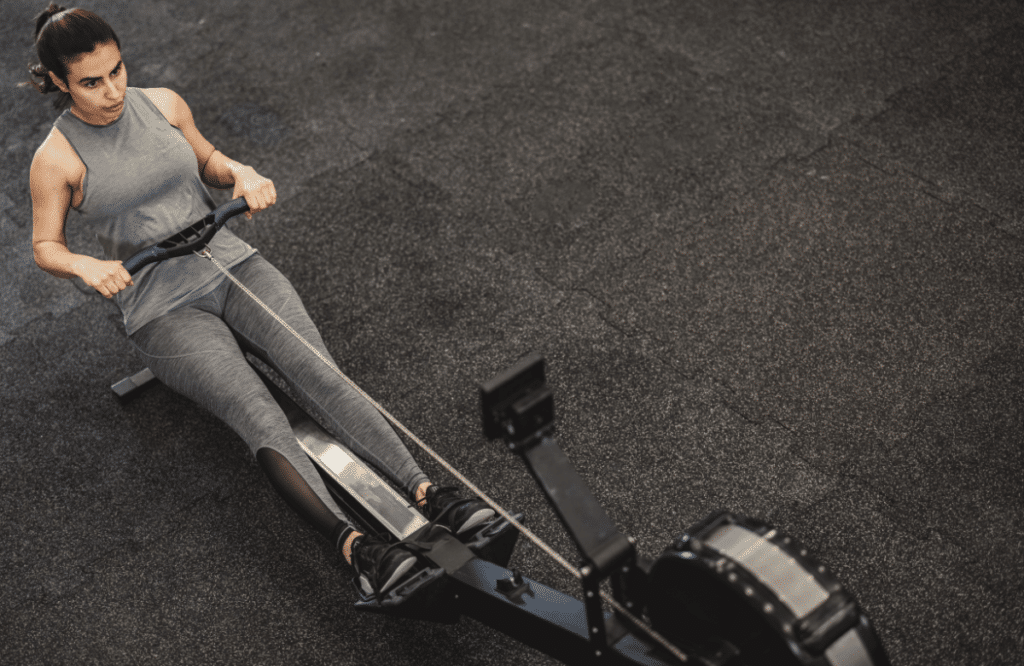
Stair Climbers and Steppers
Stair climbers and steppers replicate the motion of climbing stairs. They target the lower body muscles, including the quadriceps, hamstrings, and glutes. These machines provide a cardio workout while also strengthening the leg muscles. Some stair climbers offer the option to adjust the step height, providing a customizable workout experience.
Ski Machines
Ski machines simulate cross-country skiing and engage both the upper and lower body muscles. They offer a low-impact workout that challenges the cardiovascular system while also working the arms, legs, and core. Ski machines provide a unique and dynamic way to improve cardiovascular fitness and overall body strength.
Arc Trainers
Arc trainers combine elements of both elliptical trainers and stair climbers. They offer a low-impact workout that targets the leg muscles while also engaging the upper body through the handlebars. Arc trainers provide a smooth and efficient cardio experience, allowing users to adjust resistance levels for varied intensity.
VersaClimbers
VersaClimbers simulate vertical climbing and offer a high-intensity, total-body workout. They engage the arms, legs, and core in a continuous climbing motion. VersaClimbers provide an effective cardiovascular challenge while also promoting muscular endurance and coordination.
Jacob’s Ladder
Jacob’s Ladder is a unique cardio machine that involves a ladder-like structure with moving rungs. Users climb the ladder in a natural, low-impact motion. This machine engages both the upper and lower body while offering an intense cardiovascular workout.
Available Space
Consider the available space in your home when choosing a cardio machine. Treadmills and ellipticals require more room due to their larger size and range of motion, while stationary bikes and rowing machines tend to be more compact.
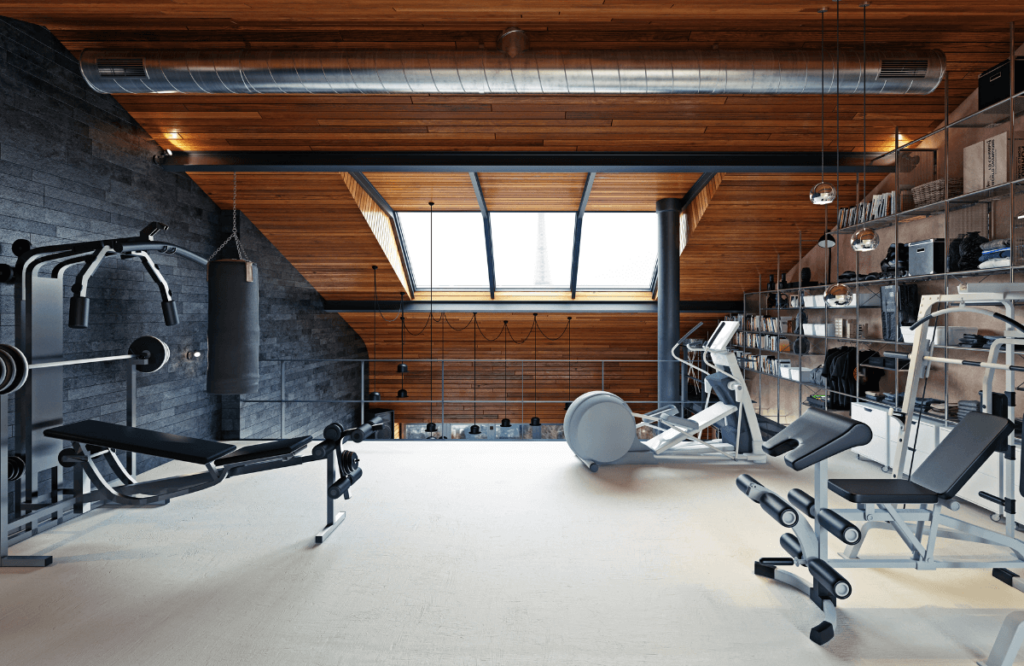
Budget
Set a realistic budget based on the quality and features you desire. High-end cardio machines often come with advanced technology, pre-set workouts and more durable construction. However, there are budget-friendly options that can still provide effective workouts.
Features and Technology
Modern cardio machines come equipped with a variety of features to enhance your workout experience.
- Console Display: Look for a clear, easy-to-read console that displays essential workout metrics such as time, distance, speed, and heart rate.
- Programs and Resistance Levels: Pre-programmed workouts and adjustable resistance levels can help keep your workouts challenging and engaging.
- Heart Rate Monitoring: Many machines come with built-in heart rate monitors or are compatible with wireless chest straps. Monitoring your heart rate can help you stay in your target heart rate zone for effective cardiovascular training.
- Entertainment Options: Some cardio machines offer built-in speakers, tablet holders, and connectivity options for entertainment during your workouts.
- Foldability and Portability: If space is a concern, consider machines that can be folded and stored when not in use.
Durability and Warranty
Investing in a durable machine is crucial for longevity. Check user reviews and ratings to gauge the machine’s durability. Additionally, look for a warranty that covers parts and labor for a reasonable period, as this indicates the manufacturer’s confidence in the product’s quality.
User Reviews and Recommendations
Before making a purchase, read user reviews and testimonials to get insights into the real-world performance and durability of the cardio machine. Online forums, fitness communities, and expert reviews can provide valuable information.
Try Before You Buy
If possible, try out different cardio machines at a gym or a store to get a feel for how they operate. This hands-on experience can help you identify which machine aligns best with your preferences and body mechanics.
Maintenance and Care
Regular maintenance is essential to prolong the lifespan of your cardio machine. Follow the manufacturer’s guidelines for cleaning, lubricating, and servicing the machine. Proper care can prevent unnecessary wear and tear.

The Remarkable Benefits of Exercising on a Cardio Machine
In the pursuit of a healthier and more active lifestyle, cardiovascular exercise plays a pivotal role. While various forms of physical activity contribute to overall well-being, using cardio machines offers a host of unique advantages that can elevate your fitness journey.
Let’s delve into the remarkable benefits of exercising on a cardio machine and shed light on why incorporating these pieces of workout gear into your routine can be a game-changer for your health and fitness.
Enhanced Cardiovascular Health
As the name suggests, cardio machines are designed primarily for cardiovascular exercise. Engaging in regular sessions on these machines elevates your heart rate, leading to improved circulation and a stronger heart. This, in turn, enhances the efficiency of oxygen and nutrient delivery to your muscles and organs, promoting overall cardiovascular health. A healthy heart is the cornerstone of longevity, reducing the risk of heart diseases, strokes, and other related ailments.
Weight Management and Calorie Burn
Cardio machines are renowned for their ability to facilitate calorie burn and aid in weight management. Engaging in sustained aerobic activity on these machines torches calories, helping you create a caloric deficit necessary for weight loss. Whether you’re sprinting on a treadmill or cycling on a stationary bike, these workouts target stubborn fat stores, making them an effective tool for shedding excess pounds.
Convenient and Weather-Independent Workouts
One of the most significant advantages of cardio machines is the convenience they offer. Regardless of the weather outside, you can engage in a fulfilling workout within the comfort of your home or at the gym. This eliminates any excuses related to unfavorable weather conditions, ensuring consistent workouts that contribute to your fitness goals.
Customizable Intensity and Workouts
Cardio machines come with adjustable settings that allow you to tailor your workouts to your current fitness level and goals. Whether you’re a beginner or an experienced athlete, you can modify factors like speed, resistance, incline, and duration to create workouts that challenge you appropriately. This adaptability ensures that your workouts remain engaging and effective over time.
Low-Impact Options
For people with joint issues or those seeking low-impact exercise options, cardio machines are a godsend. Machines like stationary bikes and ellipticals provide effective cardiovascular workouts without subjecting your joints to excessive stress. This makes them suitable for people of all ages and fitness backgrounds, enabling them to enjoy the benefits of cardio exercise without the fear of joint discomfort.
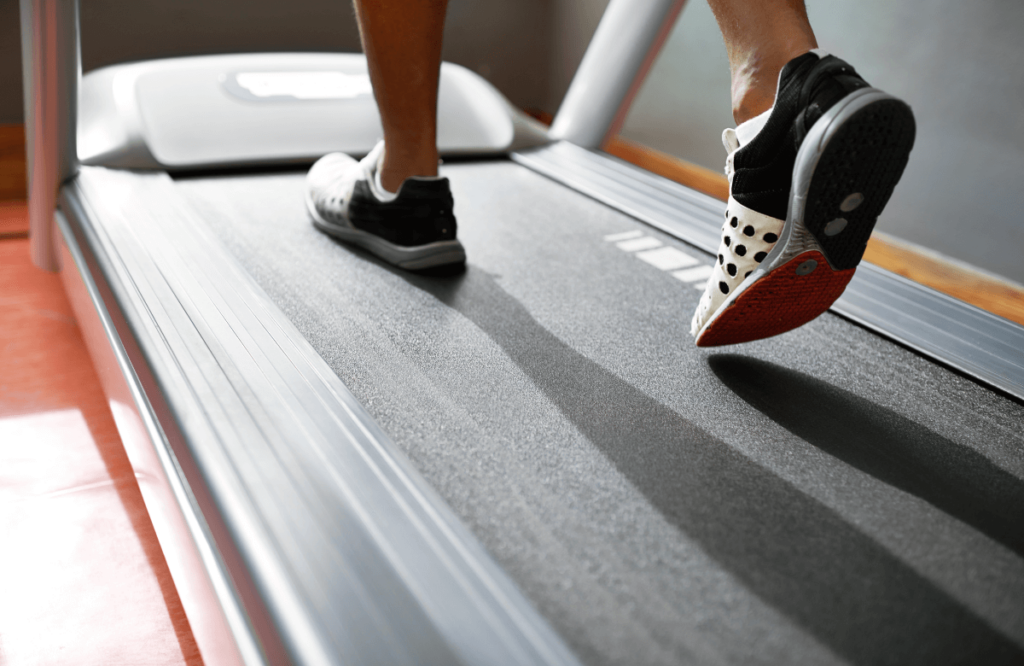
Time Efficiency
In today’s fast-paced world, time is a precious commodity. Cardio machines offer efficient workouts that can be completed in a relatively short period. High-intensity interval training (HIIT) sessions, for example, involve alternating between intense bursts of exercise and rest periods. These workouts effectively boost cardiovascular fitness, enhance metabolism, and fit seamlessly into busy schedules.
Monitoring and Tracking Progress
Most modern cardio machines are equipped with built-in technology that tracks and displays essential workout metrics. From heart rate monitoring to distance covered and calories burned, these metrics provide tangible feedback on your progress. This data-driven approach not only keeps you motivated but also enables you to set and achieve specific fitness goals.
Full-Body Engagement with Rowing Machines
Rowing machines stand out as an exceptional cardio option that engages multiple muscle groups simultaneously. Rowing works the legs, back, core, and arms, offering a full-body workout that enhances strength and endurance. This comprehensive engagement makes rowing machines a valuable addition to any fitness routine.
Mental Well-Being
The benefits of exercising on cardio machines extend beyond the physical realm. Cardiovascular exercise triggers the release of endorphins, often referred to as “feel-good” hormones. These endorphins contribute to reduced stress, improved mood, and enhanced mental clarity. Regular cardio sessions can be a therapeutic way to alleviate anxiety and uplift your spirits.
Social Interaction When Doing Cardio in a Gym
While home cardio machines offer solitude, using them at the gym provides opportunities for social interaction. Engaging in workouts alongside others can foster a sense of community, making your fitness journey more enjoyable and motivating. Group classes and the shared dedication to health can lead to new friendships and a stronger commitment to your goals.
In conclusion, the benefits of exercising on a cardio machine are multifaceted and far-reaching. Whether you’re aiming to shed pounds, enhance endurance, or simply boost your overall well-being, cardio machines provide an accessible and effective pathway to achieving your fitness aspirations. Embrace the versatility and power of cardio machines, and embark on a journey towards a healthier, fitter, and more vibrant you.

Fueling Your Cardiovascular Performance: 10 Foods to Boost Your Endurance
Embarking on a journey to enhance your cardio performance requires more than just rigorous workouts; it demands a holistic approach that encompasses proper nutrition. The foods you choose to consume play a pivotal role in boosting your cardiovascular endurance, stamina, and overall fitness.
Let’s explore the 10 remarkable foods that can power up your cardio performance and contribute to your journey toward optimal health and fitness.
Oats
Starting your day with a bowl of oats is a smart choice for cardio enthusiasts. Oats are rich in complex carbohydrates, providing a sustained release of energy to fuel your workouts. Additionally, they contain soluble fiber, which helps stabilize blood sugar levels and supports heart health.
Salmon
Loaded with omega-3 fatty acids, salmon is a superfood for your cardiovascular system. Omega-3s contribute to reducing inflammation, improving blood flow, and enhancing heart health. These healthy fats also aid in maintaining optimal cholesterol levels, crucial for overall cardiovascular performance.
Berries
Berries, such as blueberries, strawberries, and raspberries, are packed with antioxidants called flavonoids. These compounds help dilate blood vessels, improving blood flow and oxygen delivery to muscles during workouts. Berries are also low in calories and high in fibre, making them a perfect snack for sustained energy.
Leafy Greens
Leafy greens like spinach, kale, and Swiss chard are abundant sources of vitamins, minerals, and nitrates. Nitrates have been shown to improve blood vessel function, resulting in enhanced oxygen delivery to muscles and increased endurance. Incorporate these greens into salads, smoothies, or cooked dishes for a nutrient boost.
Quinoa
Quinoa is a complete protein that provides a balanced source of amino acids necessary for muscle repair and growth. It’s also high in magnesium, which aids in muscle function and relaxation, benefiting cardiovascular performance and recovery.
Bananas
Rich in potassium, bananas are essential for maintaining proper fluid balance and preventing muscle cramps during intense cardio workouts. The natural sugars in bananas provide quick energy, making them an excellent pre-workout snack.
Walnuts
Similar to salmon, walnuts are a fantastic source of omega-3 fatty acids. These nuts have been linked to improved heart health, reduced inflammation, and enhanced blood vessel function. Incorporate a handful of walnuts into your diet for a heart-healthy snack option.
Greek Yogurt
Greek yogurt is a protein-packed food that aids in muscle repair and recovery after strenuous cardio sessions. It also contains probiotics that support gut health, which plays an indirect role in overall well-being and performance.
Sweet Potatoes
Sweet potatoes are an excellent source of complex carbohydrates and beta-carotene, which convert into vitamin A in the body. Vitamin A is essential for maintaining healthy skin and mucous membranes, including those in the lungs. This can contribute to improved respiratory function during cardio workouts.
Dark Chocolate
Yes, you read that right – dark chocolate can be a beneficial addition to your cardio-focused diet. Dark chocolate contains flavonoids that promote heart health by improving blood flow, reducing blood pressure, and enhancing overall cardiovascular function. Opt for dark chocolate with a high cocoa content and consume it in moderation as a satisfying treat.
At the end of the day, when it comes to enhancing your cardio performance, the phrase “you are what you eat” couldn’t be more accurate. A diet rich in nutrient-dense foods can significantly impact your stamina, endurance, and overall cardiovascular health.
By fueling your body with these remarkable foods, you’ll be well on your way to elevating your cardio performance and embracing a healthier, more active lifestyle. Remember, it’s the synergy between your workouts and your diet that truly propels you toward achieving your fitness goals.
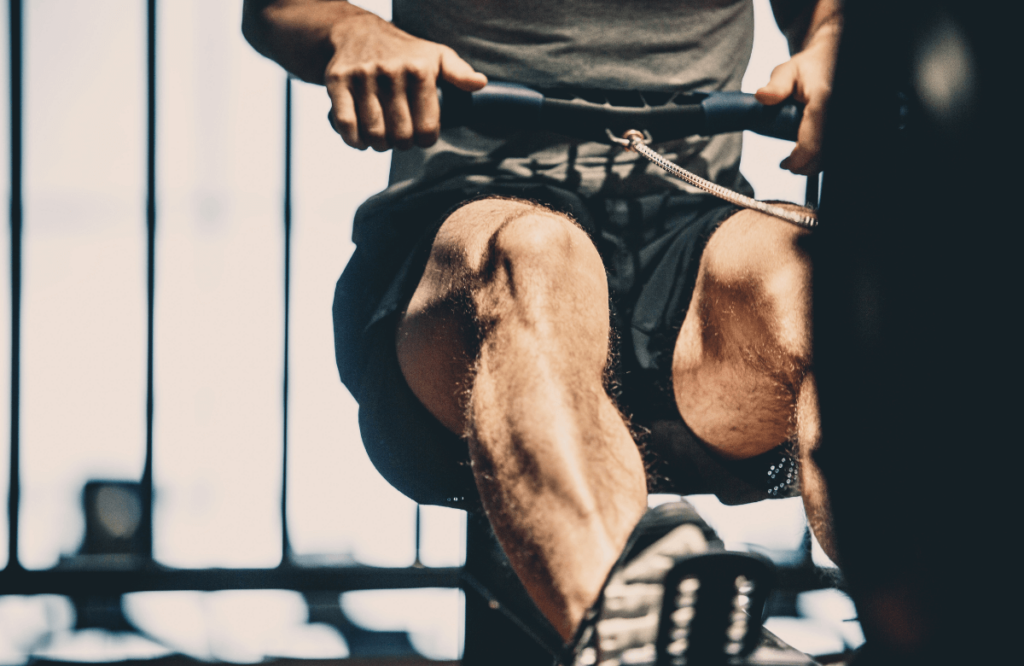
Frequently Asked Questions
What machine burns the most cardio?
The machine that burns the most cardio largely depends on your individual preferences, fitness level, and how effectively you engage with the equipment. However, when it comes to sheer calorie-burning potential, the rowing machine often stands out.
Rowing engages multiple muscle groups, including the legs, back, core, and arms, creating an intense full-body workout that can lead to substantial calorie expenditure. It combines both cardiovascular endurance and strength training, making it an efficient option for burning calories and improving overall fitness.
What burns fat faster than cardio?
High-Intensity Interval Training (HIIT) is known to burn fat faster than traditional steady-state cardio. HIIT involves alternating between short bursts of intense exercise and brief recovery periods. This approach increases your heart rate and boosts your metabolism, leading to higher calorie burning during and after the workout.
HIIT also promotes the afterburn effect, or excess post-exercise oxygen consumption (EPOC), which means your body continues to burn calories even after you’ve finished exercising.
How to burn 700 calories on a treadmill?
Burning 700 calories on a treadmill requires a combination of time, intensity, and consistency. To achieve this, you can follow these steps:
Warm-up: Start with a 5-10 minute brisk walk or light jog to prepare your body for the workout.
Interval Training: Incorporate intervals of higher intensity, such as sprinting or running at an incline, followed by periods of active recovery.
Varied Intensity: Alternate between moderate intensity and high intensity intervals to keep your heart rate elevated.
Incline Training: Increase the incline to engage different muscle groups and intensify the workout.
Duration: Aim for a workout session of around 60-90 minutes to burn 700 calories, adjusting the speed, incline, and intensity as needed.
Cool Down: Conclude your workout with a 5-10 minute low-intensity walk to gradually bring down your heart rate.
Remember, individual calorie burn varies based on factors like weight, fitness level, and metabolism. It’s crucial to listen to your body and gradually progress to more intense workouts.
Which cardio machine is a full body workout?
The rowing machine is a prime example of a cardio machine that offers a full-body workout. Rowing engages the legs, back, core, and arms in a coordinated movement. As you push with your legs and pull with your arms, your entire body is involved, making it an excellent option for building strength, improving endurance, and burning calories. Rowing also emphasizes proper posture and technique, contributing to better overall body alignment.
What home cardio machine is best for weight loss?
When it comes to choosing the best cardio machine for home use to shed some pounds, the treadmill, and the stationary bike are two popular choices.
Treadmill – Running or walking on a treadmill provides weight-bearing exercise that burns calories and promotes bone health. You can control the speed, incline, and intensity, making it adaptable to various fitness levels.
Stationary Bike – Both upright and recumbent stationary bikes offer effective low-impact cardiovascular workouts. They engage the leg muscles while supporting the back, making them suitable for individuals with joint concerns.
Ultimately, the best at home cardio machine for weight loss depends on your preferences, any existing physical conditions, and the type of exercise you enjoy and can sustain over time. Consistency is key to achieving weight loss goals, regardless of the specific machine you choose.



